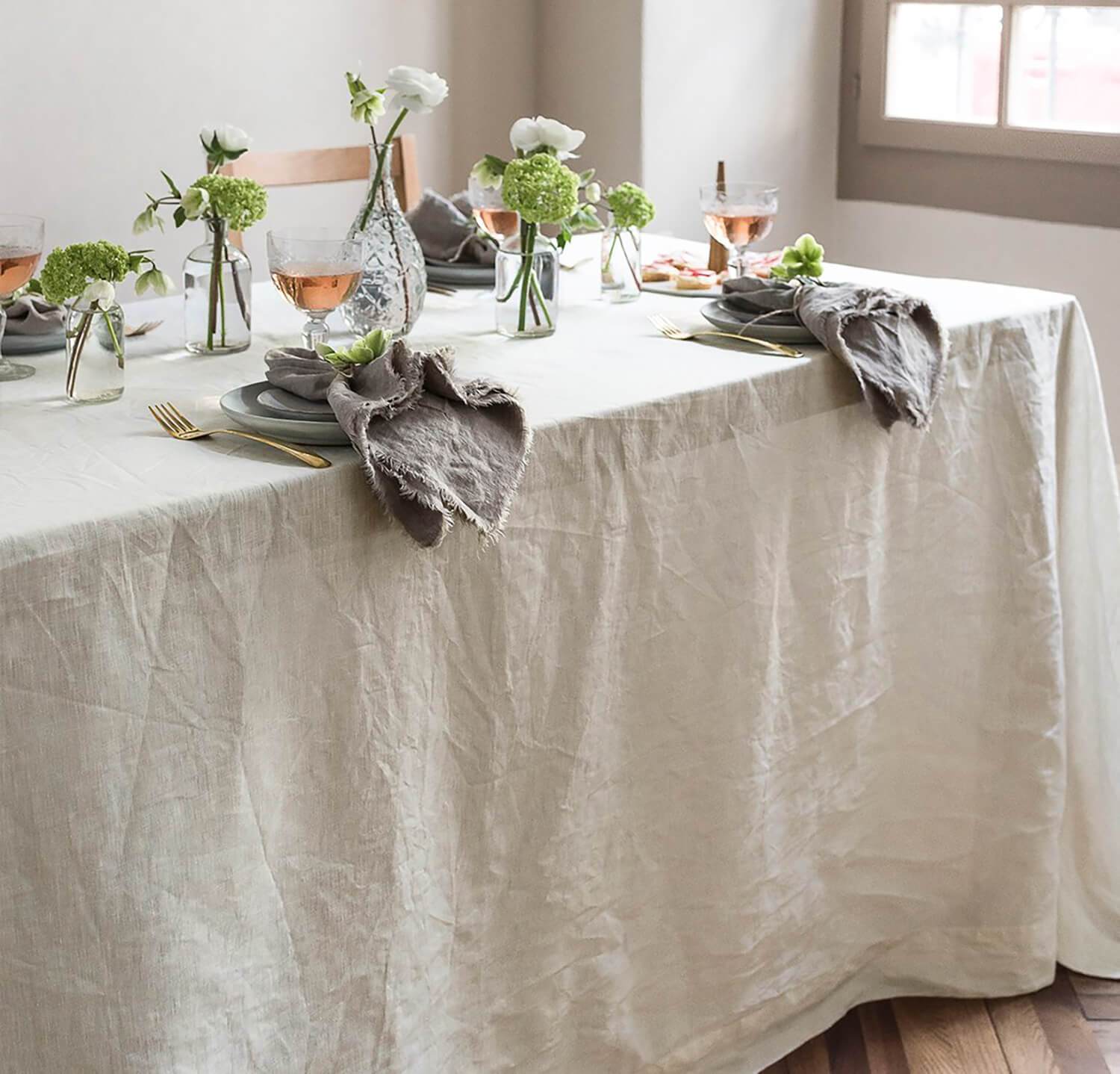Linen Material Technologies: Discovering Modern Trends and Creative Applications in Design and Textile Market
From lasting manufacturing approaches to cutting-edge weaving innovations, the advancement of bed linen is improving the landscape of the textile industry. As we dive right into the worlds of innovative style applications and the development of linen blends and crossbreed materials, a new phase unravels in which bed linen's function in future textile developments takes center phase.
Sustainable Practices in Linen Manufacturing
Sustainable practices in bed linen production have become increasingly critical in the fabric industry's initiatives to reduce environmental influence and advertise moral sourcing approaches. Linen, a natural fiber stemmed from the flax plant, supplies a variety of advantages such as longevity, breathability, and biodegradability. Nonetheless, conventional methods of bed linen production can include significant water intake, pesticide use, and energy-intensive procedures.
To attend to these challenges, lots of fabric producers are taking on sustainable techniques throughout the linen manufacturing process. This consists of sourcing flax from natural farms that stay clear of dangerous pesticides and chemicals, carrying out water-efficient retting techniques to essence fibers from the flax stalks, and making use of eco-friendly dyes and surfaces. In addition, some companies are spending in renewable resource sources to power their manufacturing centers and decreasing waste through recycling and upcycling campaigns.
Technological Improvements in Bed Linen Weaving
With the growing emphasis on sustainable techniques in linen production, the textile market is currently observing a surge in technological improvements especially targeted at reinventing the art of bed linen weaving. These innovations are reshaping the way linen materials are created, supplying enhanced effectiveness, top quality, and creative thinking in weaving techniques.
One of the key technological advancements in linen weaving is the integration of digital looms. These innovative looms are equipped with software that allows for complex and intricate designs to be woven with precision. By digitizing the weaving process, manufacturers can achieve greater uniformity and precision in their linen fabrics.
Additionally, developments in yarn spinning innovation have enabled the manufacturing of finer and even more long lasting linen yarns - table cloths. This causes softer and smoother bed linen textiles that maintain their high quality even after multiple usages and laundries
Furthermore, the development of environment-friendly dyeing procedures and surfaces for linen fabrics is obtaining grip. These sustainable practices not just minimize the environmental effect but additionally accommodate the enhancing customer demand for fairly created textiles.
Creative Style Applications for Linen
Ingenious creative methods are significantly forming the creative layout applications for linen in the fabric market. Developers are pushing the borders of standard linen use, discovering its adaptability in various applications. One prominent pattern is the integration of linen in lasting fashion lines, where its environmentally friendly residential properties are highlighted. Linen's all-natural aesthetic allure and capability to mix with other materials make it a favored choice for developing unique garments and devices that accommodate the ecologically conscious consumer.
In addition, designers are exploring site with bed linen in home decor, utilizing its breathable and resilient nature to craft fashionable furnishings such as curtains, bedding, and upholstery. The appearance and drape of bed linen bring a feeling of sophistication and comfort to interior areas, adding a touch of sophistication to modern-day homes.

Linen Blends and Hybrid Fabrics

Hybrid materials, on the other hand, take the concept of mixing a step further by including extra elements such as metal threads, recycled materials, or conductive fibers. These cutting-edge textiles not just broaden the design opportunities however also present functional aspects like conductivity, antimicrobial properties, or improved longevity. Hybrid textiles are increasingly being utilized in numerous markets, including fashion, indoor design, and technological textiles, where the demand for multifunctional products is on the surge.
Linen's Function in Future Fabric Innovations

In the world of future fabric advancements, bed linen is expected to be a principal in the growth of advanced functional materials. Developers and researchers are exploring methods to improve bed linen's integral qualities through technological improvements, such as integrating clever fabrics, nanotechnology, and performance coatings. These innovations aim to raise linen's performance features, making it ideal for a more comprehensive series of applications, from activewear to safety clothing.
Moreover, the combination of bed linen with various other all-natural or synthetic fibers opens up endless possibilities for creating novel fabrics with one-of-a-kind properties and functionalities. By leveraging linen's features and discovering cutting-edge blends, the fabric market is positioned to introduce exciting developments that cater to evolving customer demands and sustainability demands.
Final Thought
In final thought, the exploration of lasting methods, technological advancements, creative design applications, bed linen blends, and its function in future textile technologies highlight the continuous evolution of bed linen material in the modern-day design and fabric market. With a focus on innovation and creative thinking, the adaptability and environment-friendly nature of linen make it a beneficial product for designers and suppliers alike, leading the method for more advancements and developments in the area of textiles.
As we dive into the worlds of creative layout applications and the development of bed linen blends and hybrid textiles, a new phase unfolds in which bed linen's role in future fabric read the article innovations takes facility stage.
Checking out the blend of linen with various other fabrics has actually led to the emergence of ingenious blends and hybrid fabrics in the contemporary textile sector. Linen blends use an unique combination of the features of linen with those of various other fibers, resulting in textiles that possess boosted residential properties such as increased longevity, improved official statement draping, and minimized wrinkling.The advancement of linen blends and crossbreed materials has actually set the stage for Bed linen to play an essential role in driving future fabric advancements.In the realm of future textile developments, bed linen is anticipated to be a crucial player in the advancement of advanced practical textiles.